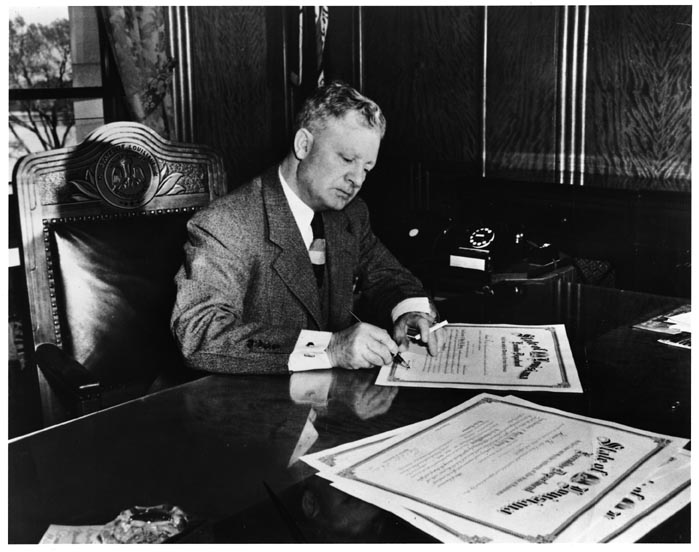
Case 12: City Politics
Interpretive Text:
The four-year-old Louisiana State Legislature passed an act of incorporation for the town of Baton Rouge on January 16, 1817. The town elected its first town magistrate, William Williams, in 1818. Over the years, the city adopted various forms of government. Today Baton Rouge has a mayor-president and city council, with a consolidated city-parish government.
In 1847 state government moved to Baton Rouge. Since then, Louisiana's colorful state politics have often overshadowed city politics. During the Civil War the state capital moved to New Orleans. Louisiana had a biracial Radical Republican government during Reconstruction, but by 1882 the state was controlled by Democrats, who were white, middle-class, male veterans of the Confederacy. Called "Bourbons" after the French royal family, these Democrats were, like their namesakes, "reactionaries, unable to forget the past or learn from it" (River Capital, p. 120).
During the 1890s the state was wracked by bad government and suffered from a severe national depression. Louisiana ranked last among the states in quality of public schools, services, and infrastructure. With popular dissatisfaction mounting, the Bourbon Democrats moved to assure their control of state government in 1898 by writing property-ownership and literacy requirements for voter registration, which for many years effectively prevented African-Americans and poor whites from voting. Mark Carleton wrote of this era: "In Baton Rouge, state politics assumed a quiet, businesslike, and dignified tone. Baton Rougeans liked the change because it put their own business and civic leaders in tune with each other. Baton Rouge, in fact, had become a corporate town, its values that of the emerging urban-industrial middle-class." (River Capital, p. 126)
Huey P. Long soon changed all that. In 1918 he was 25 years old and newly elected as north Louisiana's representative on the State Railroad Commission. He challenged the status quo, working for the rural masses and against Standard Oil a stance tantamount to being against Baton Rouge. Elected governor in 1928, he was impeached and tried by the state legislature in 1929, elected United States senator in 1932, and assassinated in 1935. Long brought reforms to Louisiana: paved roads, free school textbooks, better public education, and better state hospitals. His "Share the Wealth" program would have provided a free college education for all qualified students. In 1998 Louisiana instituted the TOPS program which does just that.
Earl Long followed in the steps of his older brother. He was elected governor in 1948 and 1956. Huey's son Russell B. Long was elected United States Senator in 1948 at age 29 and became one of the most powerful men in Washington during the 1960s and 1970s.
Baton Rouge citizens donated land for the first statehouse, designed by New York architect James Dakin. Dakin's diary recounts difficulties encountered in the creation of this "medieval castle" in the Neo-Gothic style. Gutted by fire in 1862, the Capitol was not rebuilt until 1880. New Orleans' architect William Freret added cast-iron turrets and changed the color of the building's exterior. When Huey Long came to power in 1928, he wanted a state capitol taller than any other in the nation. Built by Weiss, Dreyfous and Seiferth of New Orleans and dedicated on May 16, 1932, the building punctuated the end of Beaux-Arts architectural tradition in the United States. In 1935, its grounds were overwhelmed with flowers following Huey Long's assassination.
Items Displayed:
Items listed below were part of the exhibition but are not pictured on this page.
Postcard, Louisiana State Capitol. C. 1904. LLMVC, Baton Rouge Postcards, Picture Collection.
James Dakin Diary, 1848. LLMVC.
Philip Gould. Louisiana's Capitols: The Power and the Beauty. Lafayette: Galerie Press, 1995. LLMVC. NA4413 B36 G68.
Bust of Huey Long. LLMVC, Huey Long Collection.

Photograph of President Lyndon Bains Johnson and Senator Russell B. Long, 196?. LLMVC, Russell B. Long Papers.
Robert Penn Warren. All The King's Men. San Diego: Harcourt Brace, 1996. LLMVC PS3545 A748 A7 1996.
Photograph of Huey Long Funeral Flowers at State Capitol, 1935. LLMVC, Huey Long Collection.
